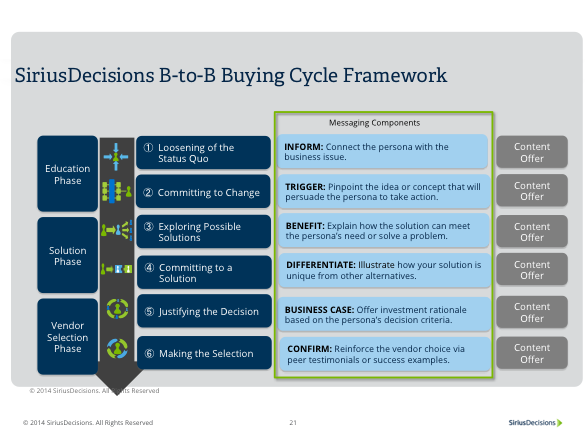Three Ways to Use a Trigger Statement to Improve Your Thought Leadership Efforts

It’s a refrain I hear very often from healthcare marketers: “We’ve got a white paper about that.”
Unfortunately, too many marketers (both inside and outside the healthcare industry) are creating thought leadership content that goes nowhere – or, worse, thought leadership content that prospects use to educate themselves about the issues before working with another company.
How can we create thought leadership content that does more than leave an all-too-fleeting impression of “Oooh, they’re smart” and instead moves a prospect toward a purchase decision with us? Here, the concept of a trigger event or trigger statement becomes paramount.
Very often, we use thought leadership content in the beginning stages of a buying cycle to connect with our target audience around a pressing business issue. They read our white papers and attend our free webinars, but then their progress stalls because we haven’t given them a compelling reason to engage further. In SiriusDecisions terms, we haven’t gotten them through the second stage of the buying cycle – committing to change (see below).
Getting healthcare prospects to commit to change involves creating urgency around the business issue. Here are three options for accomplishing this with a trigger statement:
- Give them a shocking (but valid) statistic that connects with one of your own key differentiators. Consider a relevant statement such as, “Your physicians are wasting X hours a day because they still can’t locate the information they need in their EHR.”
- Tell them what their peers are doing. This establishes credibility for your statements and also can be used to craft an impression that the prospect is woefully behind the times unless your solution is purchased. Consider statements such as, “We see that X percent of your peers have adopted this solution/product.”
- Consider the role that heuristics can play in B2B decisionmaking. Heuristics involve experience-based techniques for problem solving, and sometimes are represented by mental shortcuts that we all take in order to arrive at a decision. For example, we’re all apt to think that an event is more common if we can easily come up with multiple examples of the event’s occurrence. You may need to help your prospects come up with concrete examples of a problem so they can see how not solving the problem wastes extraordinary time, budget and/or resources.
When using trigger statements in your thought leadership, be careful to avoid “Chicken Little syndrome” (i.e. unreasonably implying that disaster is imminent). Make sure that your statements are logical and believable, and come at the right point in the buying cycle to encourage action at the right time.